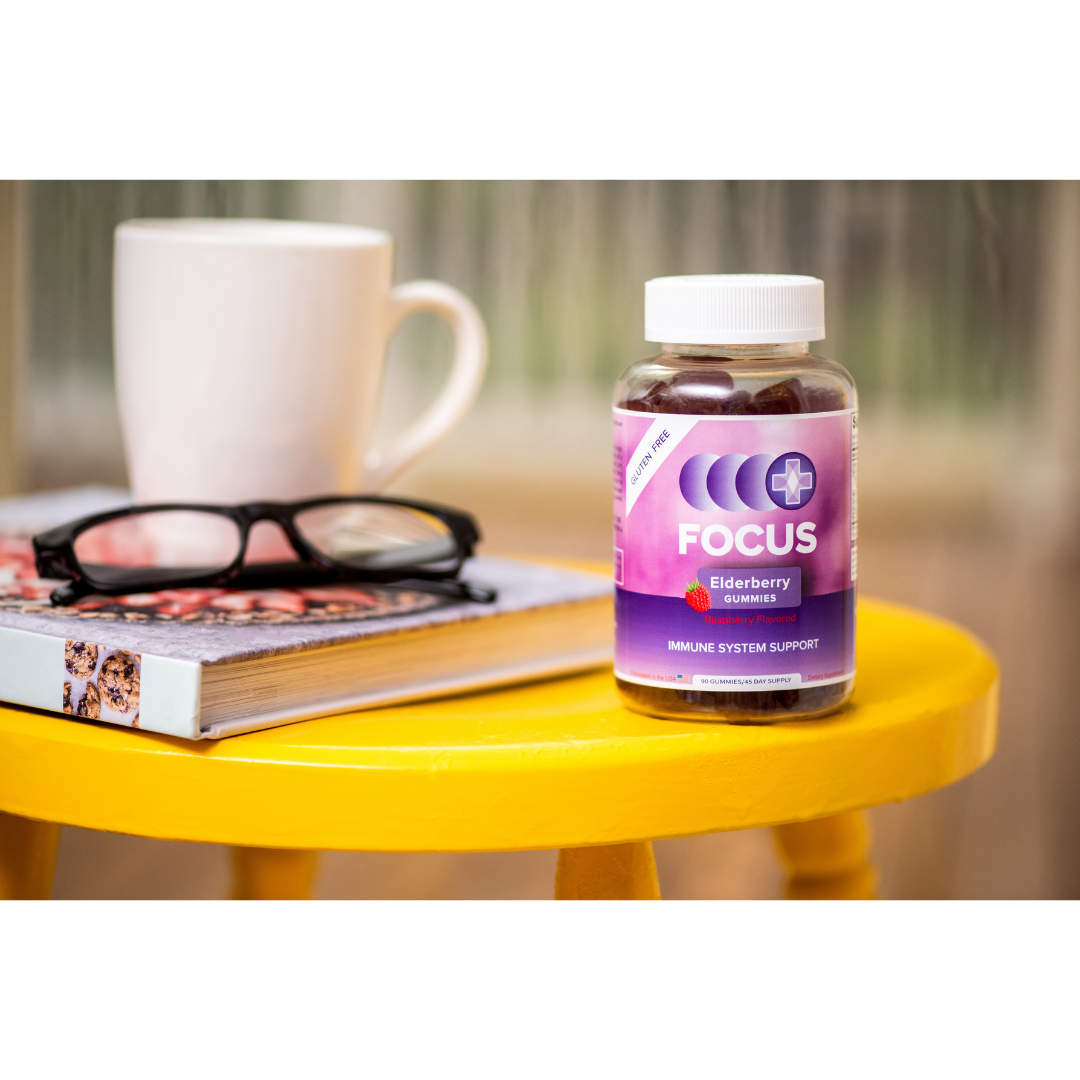Focus Elderberry Antioxidant & Promotes Healthy Heart - Gummies
Focus Elderberry Antioxidant & Promotes Healthy Heart - Gummies
Share
SKU:FV-249
548 in stock
Couldn't load pickup availability
We accept









The elderberry is a flowering plant that is also known as sambucus. The black elder (sambucus nigra) is the most commonly known tree from this group. Hippocrates, the ancient Greek physician, referred to the elderberry as the medicine chest of nature. The berries and flowers are used to make various products that are edible, including those that are used for health and wellness supplementation.
Suggested Use: 2 gummies daily or as directed by a healthcare professional. 45 Day supply
Flavor: Raspberry
Benefits of the elderberry include:
- Provide support for the immune system
- Parts of the elderberry are packed with antioxidants, which are helpful with free radicals
- Promotes heart health
Features:
- RASPBERRY ELDERBERRY GUMMIES: Maintain your health and wellness with this elderberry vitamin and promote joint support for an improved lifestyle.
- SUPPORTS THE IMMUNE SYSTEM: Provide support for the immune system and promote heart health by having taking this daily vitamin supplement that comes with a tasty raspberry flavor.
- ANTIOXIDANT SUPPLEMENT: Elderberry gummies are packed full of the antioxidants, which are helpful with free radicals, and nutrients that can help to boost your overall immunity, health, and wellness.
- DAILY DIETARY NEEDS: Elderberry may be taken any time of the day or night. Some people prefer to start their morning with their daily dose, while others take it at night to help ease symptoms of a stuffy nose.
- ELDERBERRY FLOWERING PLANT: Referred to as the medicine chest of nature, elderberry is a flowering plant also known as sambucus.
Ingredients
Vitamin C, Zinc, Sugar, Sodium, Elderberry, Organic tapioca syrup, raw cane sugar, water, pectin, sodium citrate, natural flavors, citric acid, coconut oil, and carnauba wax. Allergen Warning: Contains Tree Nuts (Coconut).
FAQ's
Q: How does the Elderberry work?
A: There are a wide variety of suggested uses that promote immunity and health. It is not typically used in its raw state (which can be toxic) but is processed prior to use. Various uses include mouthwash, oils, syrups, and extracts.
Q: Is there possible side effects to using Elderberry?
A: Some of the common side effects may include:
- Nausea or vomiting
- Stomach cramping
- Runny nose
- Diarrhea
Severe side effects may occur too, including:
- Numbness, feeling dizzy, or confusion.
- Severe perpetual diarrhea or vomiting.
It is best to consult with your health care provider concerning the use and potential side effects of the elderberry.
Q: How can Elderberry gummies help me?
A: Elderberry gummies are packed full of the antioxidants and nutrients that can help to boost your overall immunity, health, and wellness
Q: What time of day can I take Elderberry?
A: Elderberry may be taken any time of the day or night. Some people prefer to start their morning with their daily dose, while others take it at night to help ease symptoms of a stuffy nose. Dosing is flexible to suit the best time for you.


